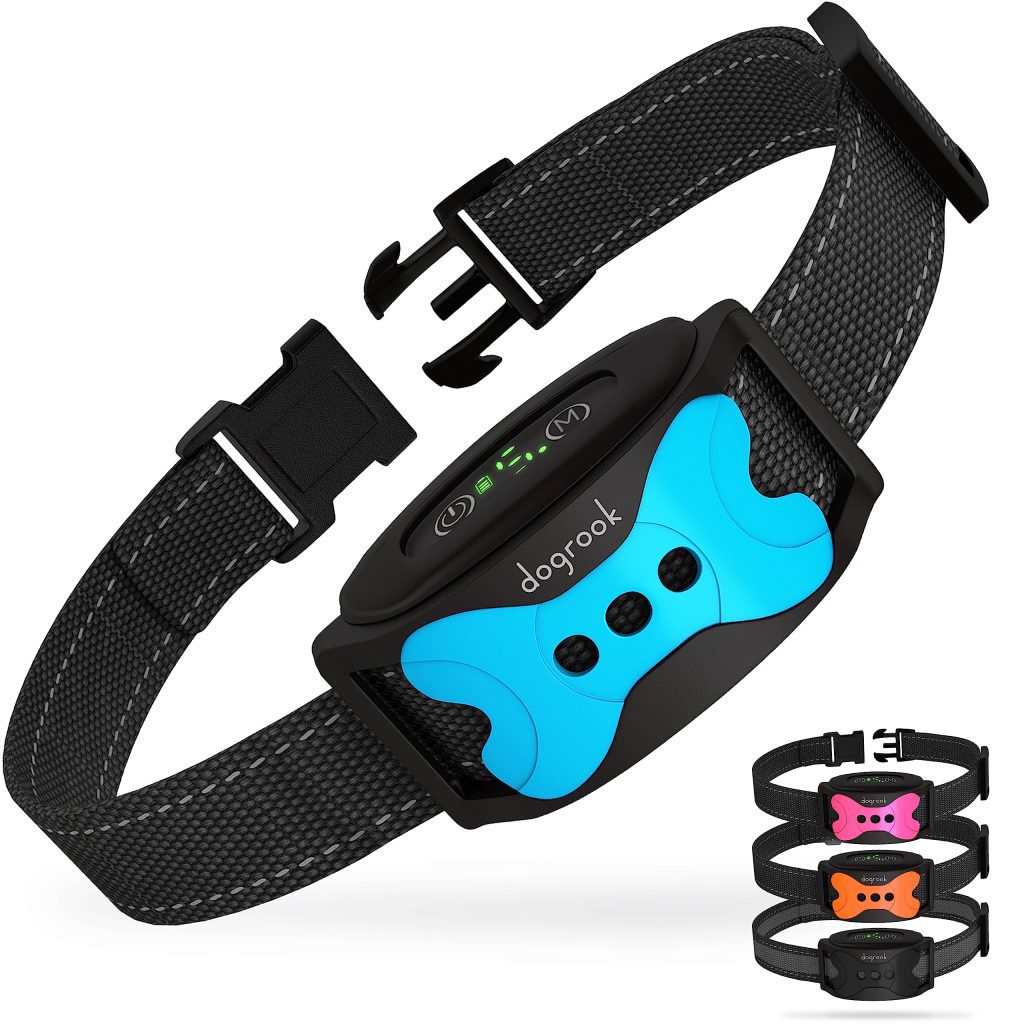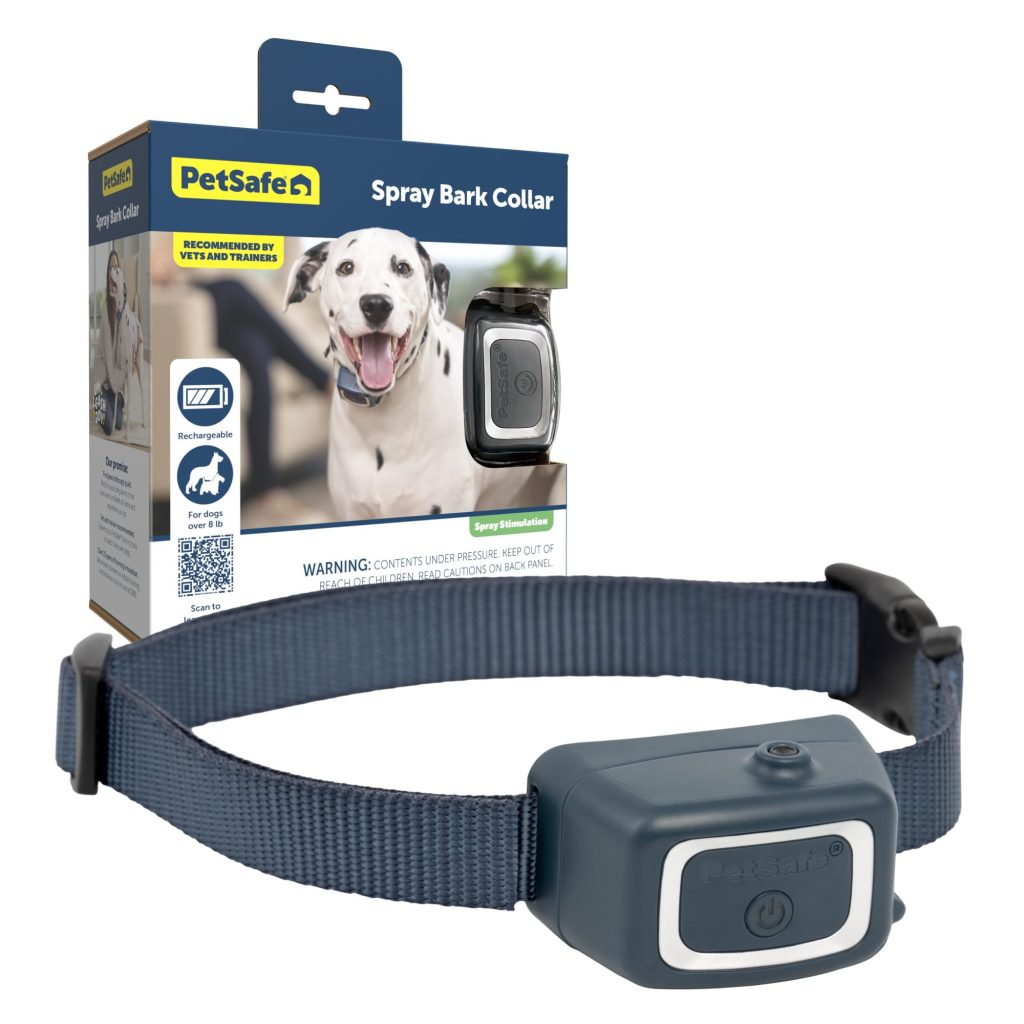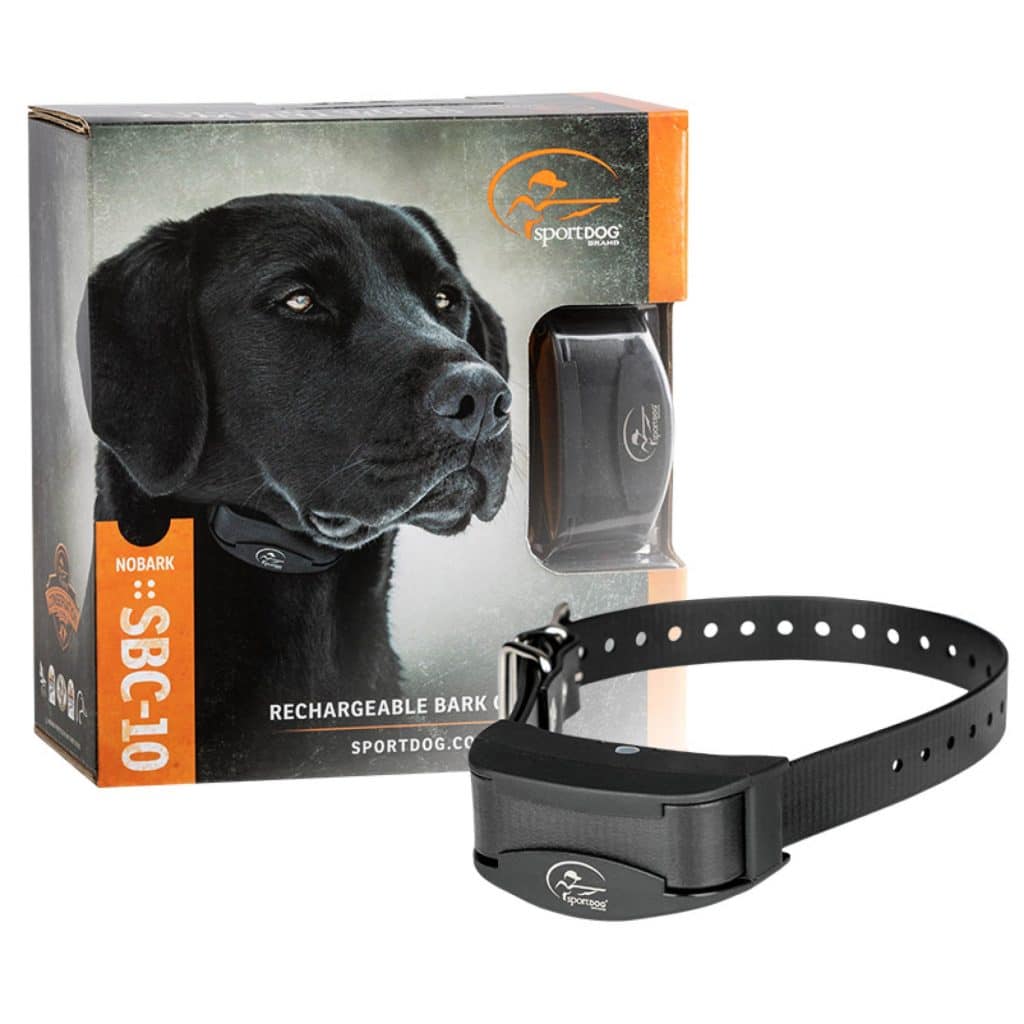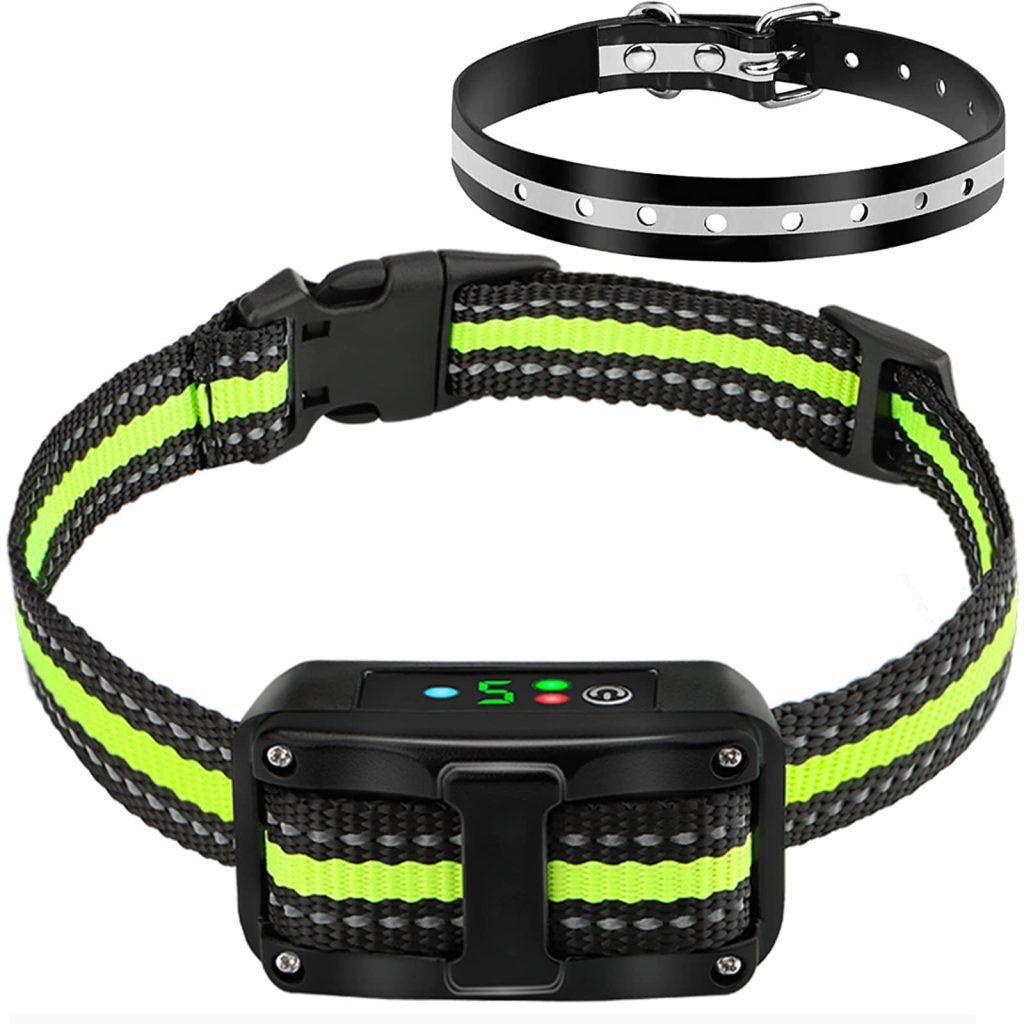In this article, we explore the question of whether or not bark collars are safe to use overnight. Many pet owners are seeking solutions to excessive barking, particularly when it disrupts their sleep or the sleep of their neighbors.
However, concerns about our furry friends’ well-being arise when contemplating using these devices for extended periods. Join us as we delve into the potential risks and benefits of using bark collars overnight, ensuring the safety and happiness of our beloved companions.
This image is the property of Amazon.com.
Potential Risks of Using Bark Collars Overnight
Physical Discomfort
One of the potential risks of using bark collars overnight is the physical discomfort it may cause our furry friends. These collars are designed to deliver a mild electric shock or emit unpleasant sounds or vibrations when the dog barks excessively. While some may argue that the discomfort is necessary to correct the behavior, it is essential to consider the well-being of our pets. Extended exposure to these stimuli can lead to discomfort, pain, and potential injury.
Psychological Harm
In addition to physical discomfort, using bark collars overnight can have psychological implications for our dogs. Constant exposure to negative stimuli can lead to fear, anxiety, and stress. Dogs may associate their barking with the unpleasant consequences of the collar, which can create a negative emotional response. This can potentially lead to behavioral issues and have long-term effects on our dogs’ mental well-being.
Skin Irritation
Another risk associated with using bark collars overnight is skin irritation. The collars are typically worn around the neck, and constant friction and pressure can cause skin redness, sores, and even open wounds. Dogs with sensitive skin or allergies may be particularly prone to skin irritation. We must monitor our dogs’ necks for discomfort or irritation and provide appropriate care to prevent skin problems from worsening.
Paw Injuries
While not directly related to the overnight use of bark collars, it is essential to consider the potential risks our dogs may face when trying to remove the collar. Some dogs may become anxious or frustrated with the collar, making them scratch or chew. This can result in injuries to their paws, including cuts, abrasions, and even infections. Regular monitoring and ensuring a proper fit of the collar can help minimize the risk of such injuries.
Factors to Consider When Using Bark Collars Overnight
Quality and Design of the Collar
Before using a bark collar overnight, it is essential to consider the quality and design of the collar. Look for collars made from safe and durable materials to ensure they won’t cause harm to your dog. Additionally, consider the collar’s design, ensuring it is comfortable and doesn’t put unnecessary pressure on your dog’s neck.
Sensitivity Level and Customization
Every dog is unique, and their sensitivity to stimuli varies. When choosing a bark collar for overnight use, consider the different sensitivity levels and customization options available. Selecting a collar that can be tailored to your dog’s specific needs is crucial, as using a collar with the wrong sensitivity level can be ineffective or too harsh for your dog.
Breed and Size of the Dog
The breed and size of your dog are essential factors to consider when using bark collars overnight. Different breeds may have different barking tendencies and require varying levels of correction. Additionally, choosing a collar that fits properly and is suitable for your dog’s size is essential. A collar that is too tight or too loose may cause discomfort or potential escape.
Overall Health and Age of the Dog
Your dog’s overall health and age should also be considered before using bark collars overnight. Elderly dogs or those with existing health conditions may be more sensitive to the stimuli delivered by the collar. It is crucial to consult with a veterinarian to ensure your dog is in good health and can tolerate using a bark collar.
Choosing the Right Bark Collar for Overnight Use
Researching Different Collar Types
When choosing a bark collar for overnight use, conducting thorough research on the different collar types available is essential. Various options include static shock, ultrasonic, and vibration collars. Each type works differently and may have varying effectiveness for different dogs. Understanding how each collar type works will help you make an informed decision.
Considering the Dog’s Disposition
Consider your dog’s disposition when choosing a bark collar for overnight use. Some dogs respond better to certain stimuli, while others become even more anxious or agitated. Selecting a collar that aligns with your dog’s temperament and does not exacerbate any existing behavioral issues is crucial.
Seeking Professional Advice
Before using a bark collar overnight, it is highly recommended to seek professional advice. Dog trainers or behaviorists have in-depth knowledge and experience training dogs and can provide valuable insights into the effectiveness and suitability of using bark collars. They can assess your dog’s behavior and help determine whether a bark collar is appropriate for your situation.
Reading Customer Reviews
Reading customer reviews can provide valuable insights into the effectiveness and safety of different bark collars. While each dog is unique and may respond differently, customer reviews can give you an overall idea of the collar’s performance and durability. Look for collars with positive reviews and note any concerns or negative experiences other pet owners share.
Advantages of Using Bark Collars Overnight
Decreased Noise Disturbance
One of the advantages of using bark collars overnight is the potential for decreased noise disturbance. Excessive barking can be disruptive, not only to our sleep but also to our neighbors. Using a bark collar overnight can effectively address the barking behavior and reduce noise disturbances, fostering a more peaceful environment for everyone.
Improved Sleep Quality
Barking throughout the night can disrupt our sleep, leaving us tired and groggy the next day. When used appropriately, bark collars can help improve our sleep quality by curbing excessive barking. A restful night’s sleep benefits us and ensures our dogs are well-rested and rejuvenated for the day ahead.
Protection of Neighborhood Relationships
Excessive barking can strain relationships with our neighbors, leading to frustration and potential conflicts. Using bark collars overnight demonstrates our commitment to being responsible pet owners. This can help foster positive relationships within our community, creating a harmonious environment for humans and furry companions.
Efficiency in Training
Using bark collars overnight can expedite the training process by providing immediate feedback to our dogs. The collars consistently remind us to refrain from excessive barking, reinforcing the desired behavior. This can be particularly useful for dogs who have proven resistant to other training methods, allowing us to achieve more efficient and effective training outcomes.
This image is the property of Amazon.com.
Ensuring Safety While Using Bark Collars Overnight
Using the Collar as Directed
To ensure the safety of our dogs, it is crucial to use the bark collar as directed by the manufacturer. This means following the recommended instructions for fitting, adjusting, and activating the collar. It is essential not to exceed the recommended duration of use or intensity of correction, as this could potentially harm our dogs and undermine the intended purpose of the collar.
Monitoring the Dog’s Behavior and Comfort
When using bark collars overnight, monitoring our dogs’ behavior and comfort levels closely is essential. Observe for any signs of distress, anxiety, or discomfort. If excessive scratching, pacing, or vocalizations are noted, it may indicate that the collar is causing distress and needs to be adjusted or temporarily removed.
Providing Adequate Breaks
To ensure our dogs’ well-being, providing adequate breaks from using bark collars is essential. Extended and uninterrupted use can lead to increased stress and discomfort. Regularly remove the collar, allowing your dog to have breaks from the corrective stimuli and ensuring they have periods of relaxation.
Checking for Signs of Skin Irritation or Injuries
Regularly inspect your dog’s neck for any signs of skin irritation or injuries caused by the bark collar. Look out for redness, swelling, sores, or any other abnormalities. If you notice any signs of skin irritation, immediately remove the collar and consult a veterinarian to address the issue and explore alternative training methods.
Alternatives to Bark Collars for Overnight Use
Positive Reinforcement Training
Positive reinforcement training is a widely recommended alternative to bark collars for curbing excessive barking. This involves rewarding desired behaviors, such as quietness or calmness, with treats, praise, or affection. By focusing on positive reinforcement, we can effectively shape our dogs’ behavior without resorting to aversive methods.
Behavioral Modification Techniques
Behavioral modification techniques can be highly effective in addressing excessive barking. These techniques involve understanding the underlying causes of the barking and implementing strategies to modify the behavior. This may include desensitization, counterconditioning, or teaching alternative behaviors to replace the barking.
Creating a Soothing Environment
Creating a soothing environment can help alleviate excessive barking, especially at night. This can be achieved by providing comfortable sleeping quarters, reducing external stimuli that may trigger barking, and ensuring our dogs receive adequate mental and physical stimulation throughout the day. Calming aids like lavender-infused bedding or calming music may also help create a relaxing atmosphere.
Consulting with a Professional Dog Trainer
If excessive barking persists despite our efforts, consulting with a professional dog trainer or behaviorist is advisable. They can assess the underlying causes of the barking and provide tailored guidance and support.
A professional’s expertise can help determine the best action and provide an individualized training plan for our dog and circumstances.
This image is the property of Amazon.com.
Potential Negative Effects of Using Bark Collars Overnight
Development of Anxiety or Fear
Using bark collars overnight can lead to anxiety or fear in our dogs. Constant exposure to aversive stimuli can create a negative association and trigger anxiety-related behaviors. It is crucial to carefully monitor our dogs’ reactions and discontinue using bark collars if signs of anxiety or fear manifest.
Association of Negative Feelings with Certain Places
When used overnight, bark collars can inadvertently associate negative feelings with particular places or environments. Dogs may start associating their sleeping area or specific rooms with the unpleasant consequences of the collar, leading to avoidance or anxiety-related behaviors. This may impact our dogs’ overall quality of life, emphasizing the need for consideration and mindful use of such collars.
Increased Aggression
In rare cases, using bark collars overnight can increase aggression in some dogs. Aversive stimuli may elicit defensive or frustrated behaviors, leading to aggressive responses escalating. It is essential to carefully monitor our dogs’ behavior and discontinue using bark collars if aggression becomes a concern.
Potential Ineffectiveness
Another potential adverse effect of using bark collars overnight is their potential ineffectiveness. Some dogs may become habituated to the collar’s stimulation, rendering it less effective. Certain breeds or individuals may be less responsive to aversive training methods. In such cases, alternative training approaches may need to be considered.
Factors to Consider Before Using Bark Collars Overnight
Local Noise Regulations
Before using bark collars overnight, it is essential to consider local noise regulations. Some neighborhoods or apartment complexes may have specific rules or restrictions regarding barking dogs. Familiarize yourself with these regulations to ensure compliance and avoid potential legal issues.
Availability of Other Solutions
Before opting for bark collars, explore alternative solutions that may address the excessive barking issue at its root. Evaluate whether behavioral modification techniques, positive reinforcement training, or environmental changes may be more appropriate and effective for your dog and situation.
Dog’s Individual Sensitivity
Not all dogs respond the same way to bark collars. Consider your dog’s sensitivity to stimuli before deciding to use a bark collar overnight. Some dogs may be more sensitive and may not tolerate the aversive nature of the collar, leading to unintended negative consequences.
Convenience and Practicality
Consider the convenience and practicality of using bark collars overnight. Evaluate whether it aligns with your lifestyle, schedule, and commitments. Bark collars require consistent monitoring, adjustments, and potential removal for breaks. Ensure you can accommodate these requirements before embarking on their overnight use.
This image is the property of www.petsense.com.
Expert Opinions on Using Bark Collars Overnight
Various Training Methods Advocated by Experts
Experts offer a range of opinions on using bark collars overnight. While some professionals advocate using bark collars as a last resort, others believe that positive reinforcement training and behavioral modification techniques offer more humane and effective solutions for excessive barking. Considering these differing viewpoints and selecting a training approach that aligns with your values and goals is crucial.
Different Stances on the Use of Bark Collars
There is no consensus among experts regarding the use of bark collars overnight. Some experts argue that bark collars can be practical tools when used responsibly and as a part of a comprehensive training plan. Others caution against their use due to their potential risks and adverse effects on dogs’ well-being. It is essential to weigh the varying opinions and make an informed decision prioritizing your dog’s safety and welfare.
Research and Studies Supporting or Opposing Overnight Use
The research on the overnight use of bark collars is limited and often yields conflicting results. Some studies suggest that bark collars can effectively reduce excessive barking, while others highlight their potential detrimental effects on dogs’ behavior and welfare. It is essential to critically evaluate the existing research and consider the potential benefits and risks before using bark collars overnight.
Ethical Considerations
The use of bark collars raises ethical considerations surrounding the use of aversive training methods. While bark collars may offer a convenient solution to excessive barking, it is essential to question whether they align with our moral obligations as responsible pet owners. Consider whether alternative training methods that promote positive reinforcement and respect for our dogs’ well-being may be more ethically sound.
Conclusion
When considering using bark collars overnight, it is crucial to carefully weigh the potential risks, benefits, and ethical considerations. While bark collars may temporarily solve excessive barking, it is essential to prioritize the well-being and comfort of our furry friends.
Considering alternative training methods, consulting with professionals, and creating a nurturing environment may offer more humane and effective long-term solutions to address excessive barking.
Ultimately, the decision to use bark collars overnight should be based on individual circumstances, considering our beloved canine companions’ specific needs and sensitivities.
This image is the property of Amazon.com.














































